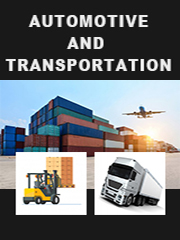Report overview
Rail Wheels a type of Wheel specially designed for use on rail tracks. The Wheels is on the rails without guidance except for the shape of the tyre in relation to the rail head. Contrary to popular belief, the flanges should not touch the rails. Flanges are only a last resort to prevent the wheels becoming derailed - they're a safety feature. The Wheel tyre is coned and the rail head slightly curved.
Ideally, the Wheel profile should be determined by agreement between the railway infrastructure owner and the rolling stock owner. Of course, it varies from place to place but it is rarely a simple angle. It's usually a carefully calculated compound form. With respect to the rail angle, in the UK for example, it is set at 1 in 20 (1/20 or 0.05). In the US and France it's usually at 1/40. Light rail systems operating over roadways will have special profiles.
This report aims to provide a comprehensive presentation of the global market for Rail Wheel (Railway Wheel), with both quantitative and qualitative analysis, to help readers develop business/growth strategies, assess the market competitive situation, analyze their position in the current marketplace, and make informed business decisions regarding Rail Wheel (Railway Wheel). This report contains market size and forecasts of Rail Wheel (Railway Wheel) in global, including the following market information:
Global Rail Wheel (Railway Wheel) Market Revenue, 2018-2023, 2024-2029, ($ millions)
Global Rail Wheel (Railway Wheel) Market Sales, 2018-2023, 2024-2029, (K Units)
Global top five Rail Wheel (Railway Wheel) companies in 2022 (%)
The global Rail Wheel (Railway Wheel) market was valued at US$ 3122 million in 2022 and is projected to reach US$ 3588.6 million by 2029, at a CAGR of 2.0% during the forecast period. The influence of COVID-19 and the Russia-Ukraine War were considered while estimating market sizes.
Asia-Pacific is the largest Rail Wheel (Railway Wheel) market with about 45% market share. North America is follower, accounting for about 17% market share.
The key players are NSSMC, Interpipe, OMK Steel, EVRAZ NTMK, Bochumer Verein Verkehrstechnik (BVV), Lucchini RS, Rail Wheel Factory, GHH-Bonatrans, Amsted Rail, CAF, Comsteel, Magang (Group) Holding, Taiyuan Heavy Industry, Datong ABC Castings Company Limited (DACC), Xinyang Amsted Tonghe Wheels, ZHIQI RAILWAY EQUIPMENT etc. Top 3 companies occupied about 33% market share.
We surveyed the Rail Wheel (Railway Wheel) manufacturers, suppliers, distributors and industry experts on this industry, involving the sales, revenue, demand, price change, product type, recent development and plan, industry trends, drivers, challenges, obstacles, and potential risks.
Total Market by Segment:
Global Rail Wheel (Railway Wheel) Market, by Type, 2018-2023, 2024-2029 ($ Millions) & (K Units)
Global Rail Wheel (Railway Wheel) Market Segment Percentages, by Type, 2022 (%)
High speed
Freight Wagons
Passenger Wagons
Locos
Global Rail Wheel (Railway Wheel) Market, by Application, 2018-2023, 2024-2029 ($ Millions) & (K Units)
Global Rail Wheel (Railway Wheel) Market Segment Percentages, by Application, 2022 (%)
OE Market
AM Market
Global Rail Wheel (Railway Wheel) Market, By Region and Country, 2018-2023, 2024-2029 ($ Millions) & (K Units)
Global Rail Wheel (Railway Wheel) Market Segment Percentages, By Region and Country, 2022 (%)
North America
US
Canada
Mexico
Europe
Germany
France
U.K.
Italy
Russia
Nordic Countries
Benelux
Rest of Europe
Asia
China
Japan
South Korea
Southeast Asia
India
Rest of Asia
South America
Brazil
Argentina
Rest of South America
Middle East & Africa
Turkey
Israel
Saudi Arabia
UAE
Rest of Middle East & Africa
Competitor Analysis
The report also provides analysis of leading market participants including:
Key companies Rail Wheel (Railway Wheel) revenues in global market, 2018-2023 (Estimated), ($ millions)
Key companies Rail Wheel (Railway Wheel) revenues share in global market, 2022 (%)
Key companies Rail Wheel (Railway Wheel) sales in global market, 2018-2023 (Estimated), (K Units)
Key companies Rail Wheel (Railway Wheel) sales share in global market, 2022 (%)
Further, the report presents profiles of competitors in the market, key players include:
NSSMC
Interpipe
OMK Steel
EVRAZ NTMK
Bochumer Verein Verkehrstechnik (BVV)
Lucchini RS
Rail Wheel Factory
GHH-Bonatrans
Amsted Rail
CAF
Comsteel
Magang (Group) Holding
Taiyuan Heavy Industry
Datong ABC Castings Company Limited (DACC)
Xinyang Amsted Tonghe Wheels
ZHIQI RAILWAY EQUIPMENT
Outline of Major Chapters:
Chapter 1: Introduces the definition of Rail Wheel (Railway Wheel), market overview.
Chapter 2: Global Rail Wheel (Railway Wheel) market size in revenue and volume.
Chapter 3: Detailed analysis of Rail Wheel (Railway Wheel) manufacturers competitive landscape, price, sales and revenue market share, latest development plan, merger, and acquisition information, etc.
Chapter 4: Provides the analysis of various market segments by type, covering the market size and development potential of each market segment, to help readers find the blue ocean market in different market segments.
Chapter 5: Provides the analysis of various market segments by application, covering the market size and development potential of each market segment, to help readers find the blue ocean market in different downstream markets.
Chapter 6: Sales of Rail Wheel (Railway Wheel) in regional level and country level. It provides a quantitative analysis of the market size and development potential of each region and its main countries and introduces the market development, future development prospects, market space of each country in the world.
Chapter 7: Provides profiles of key players, introducing the basic situation of the main companies in the market in detail, including product sales, revenue, price, gross margin, product introduction, recent development, etc.
Chapter 8: Global Rail Wheel (Railway Wheel) capacity by region & country.
Chapter 9: Introduces the market dynamics, latest developments of the market, the driving factors and restrictive factors of the market, the challenges and risks faced by manufacturers in the industry, and the analysis of relevant policies in the industry.
Chapter 10: Analysis of industrial chain, including the upstream and downstream of the industry.
Chapter 11: The main points and conclusions of the report.
